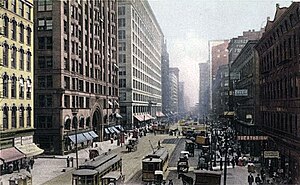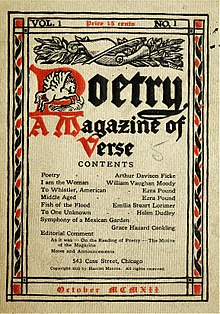Chicago literature
James Atlas, in his biography of Chicago writer Saul Bellow, suggests that "the city's reputation for nurturing literary and intellectual talent can be traced to the same geographical centrality that made it a great industrial power.
[3] Due to these rapid changes, Chicago writers of the late nineteenth and early twentieth centuries faced the challenge of how to depict this potentially disorienting new urban reality.
Narrative fiction of that time, much of it in the style of "high-flown romance" and "genteel realism", needed a new approach to describe Chicago's social, political, and economic conditions.
Chicago's early twentieth-century writers and publishers were seen as producing innovative work that broke with the literary traditions of Europe and the Eastern United States.
"[8] While Chicago produced much realist and naturalist fiction,[9] its literary institutions also played a crucial role in promoting international modernism.
[10] Similarly, the publication that became Poetry magazine (founded 1912 by Harriet Monroe) was instrumental in launching the Imagist and Objectivist poetic movements.
In the second half of the 20th century, the University of Chicago served as a hub for many emerging postmodern writers such as Saul Bellow, Kurt Vonnegut, Philip Roth, and Robert Coover.

